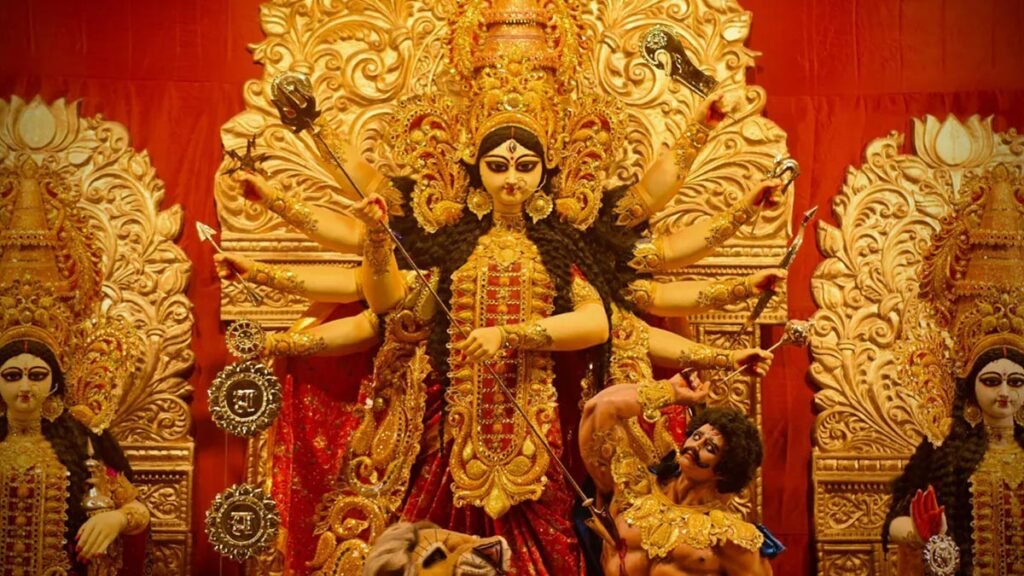Across much of India, Navratri is marked by fasting and abstinence. But in Bengal, kitchens overflow with kosha mangsho, hilsa fish, biryani, and fragrant curries. This stark contrast is not rebellion—it is devotion expressed differently. In Bengal, Navratri overlaps with Durga Puja, a festival rooted in Shakta tradition that celebrates Maa Durga’s annual return to her maternal home. Here, feasting becomes an offering of joy, abundance, and welcome.
Shakta vs. Vaishnava Traditions
The difference stems from theology. In Shakta traditions, the goddess is supreme, and both vegetarian and non-vegetarian offerings are considered sacred. By contrast, Vaishnava traditions dominant in North India emphasize vegetarianism as purity in devotion. Historian Nrisingha Bhaduri notes that in Bengal, offering fish or meat to the goddess has been considered auspicious for centuries—especially in rituals tied to Durga and Kali worship.
Navratri in Bengal
For Bengalis, Navratri is less about denial and more about celebration. Durga Puja marks the goddess’s homecoming, turning the festival into a time of warmth, family gatherings, and shared meals. While North Indian households observe strict fasts, Bengali homes prepare elaborate spreads that honor the goddess through abundance.
Sacred Symbolism of Fish and Meat
- Fish is central to Bengali culture, symbolizing fertility, prosperity, and continuity. It features prominently in rituals, with varieties like hilsa and rohu offered as prasad. The popular saying maach-e bhaat-e Bangali (“fish and rice make a Bengali”) reflects this spiritual bond.
- Meat is linked to Durga’s victory over Mahishasura. In many Shakta rituals, goat sacrifice remains a traditional practice, with the cooked meat later shared as prasad. Eating meat during the festival thus becomes a symbolic celebration of triumph and divine strength.
Temple and Community Practices
Bengal’s geography and history reinforced these traditions. With rivers and fertile soil, fish became a staple protein. Temples such as Kalighat in Kolkata still include animal offerings as part of rituals, underscoring the spiritual role of non-vegetarian food. At the same time, pandals across Bengal serve vegetarian bhog—khichuri, labra, chutney, and payesh—to devotees. This duality highlights Bengal’s ability to honor both restraint and indulgence within the same celebration.
The Modern Feast
Today, Durga Puja blends sacred tradition with street food culture. Pandal-hoppers indulge in biryani, rolls, cutlets, and sweets after offering prayers. In homes, families cook kosha mangsho, ilish machh, chicken curry, and fish fry, turning every meal into a festival of flavors.
Devotion Through Abundance
For Bengalis, eating non-veg during Navratri is not about rejecting faith—it is about expressing it. Every shared meal, every piece of golden hilsa, and every bite of mutton curry becomes part of worship, a sensory celebration of the goddess’s arrival. This unique approach reflects India’s cultural diversity, where the same festival takes on dramatically different forms across regions. In Bengal, devotion means abundance—welcoming Maa Durga not through silence and restraint, but through joy, flavor, and feasting.


